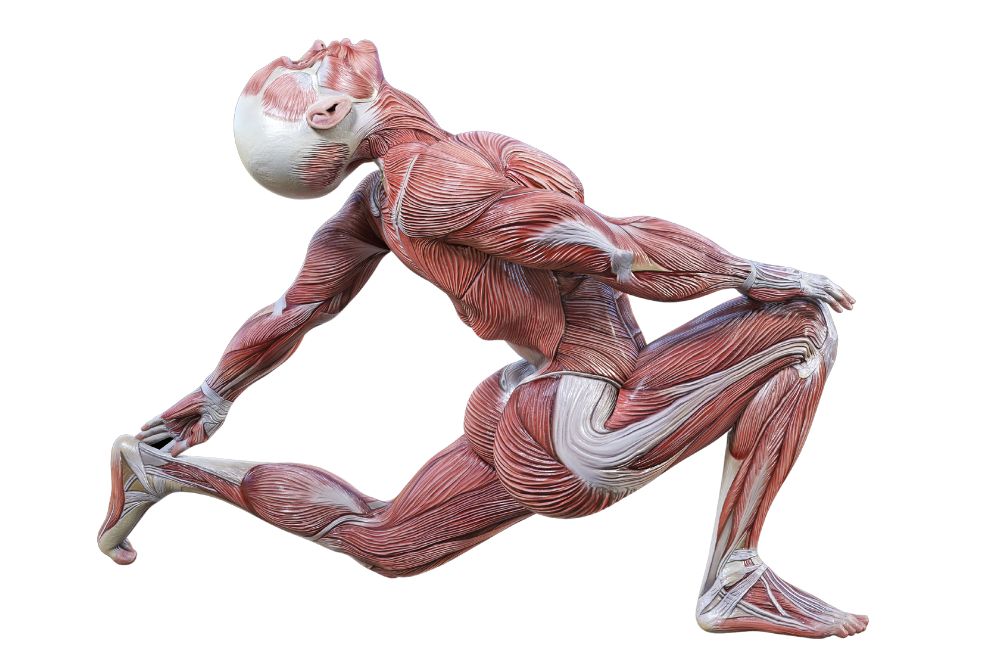
If you spend a lot of time sitting, you’d benefit from doing hip stretches on the regular basis. If you are pointing fingers at the hip flexors for your cause of tight or cranky hips, you are right.
Hip flexors are one muscle group that is responsible for the functions of your hips, posture, and more. When hip flexors get tight with excessive sitting, you’d feel it in the movements and achiness.
The Stretches for Tight Hips
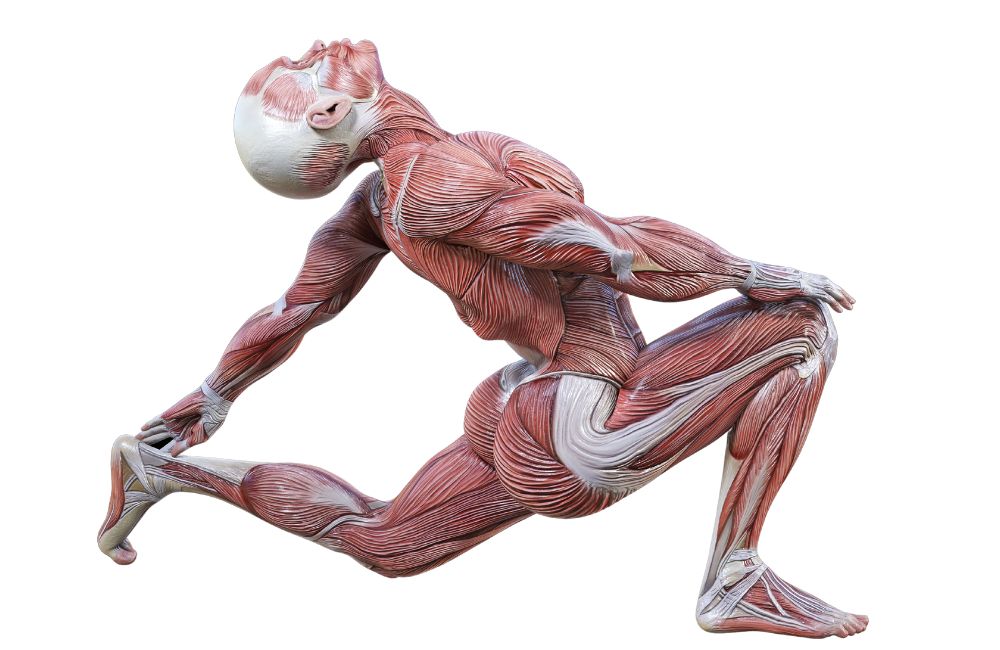
You’ll also like:
Do These Two Hip Stretches To Undo the Damage of Sitting All Day
These Hip Opener Yoga Poses Stretch and Strengthen Tight Hips and Prevent Lower Back Pain
Hip Muscles 101
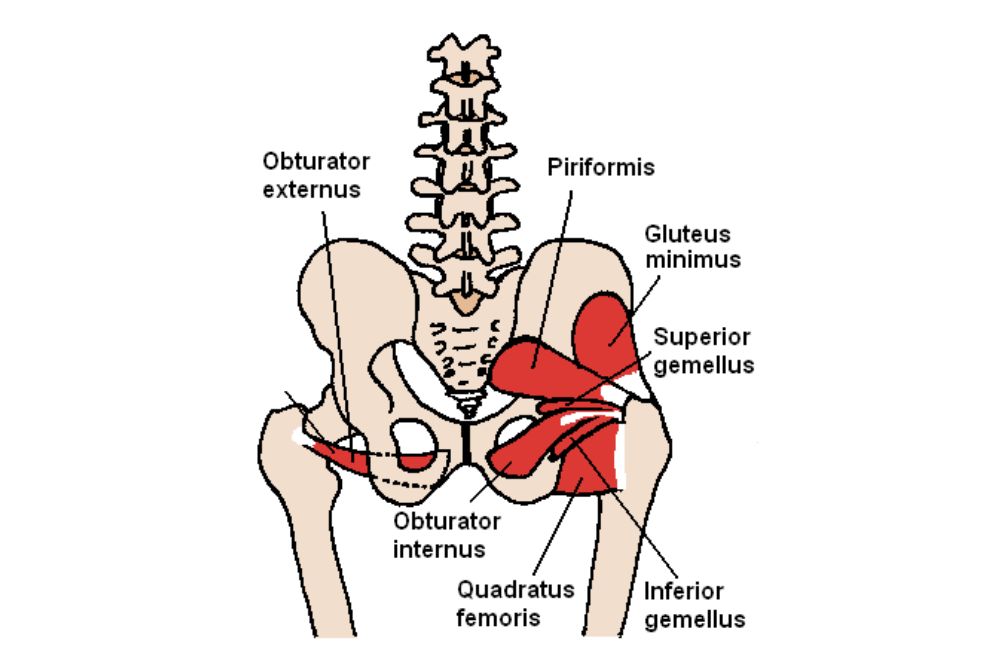
In general, the hip muscles can be categorized into four separate groups. Each of these muscle groups performs different movements and serves separate, yet related, functions.
Let’s take a look at each of these groups and some of the major muscles that make them up.
The Hip Adductors
Hip adduction refers to the motion that swings the leg inward, toward the midline of the body. There are numerous muscles that perform this function, but some of the major ones are the gracilis, adductor magnus, and adductor longus.
Also, many of these adductor muscles perform a secondary function: internal rotation.
This is the motion that turns the thigh inward. The adductors, much like the rest of the hip muscles we’ll discuss, can often become very tight due to a sedentary lifestyle.
Luckily, with some simple stretches, you can slowly but surely loosen up these tissues.
The Hip Abductors
The hip abductors are the muscles that swing the leg outward, away from the midline.
Various muscles aid in abduction, some of the most important ones being the gluteus medius and gluteus minimus.
While these muscles can become tight, weakness in this area is a more commonly seen issue. By keeping this area both strong and flexible, you can prevent and treat many different types of low back and hip pain.
The Hip Flexors
Of all the hip muscle groups, the hip flexors are often the ones that are tight and problematic. Tight hip flexors often lead to back pain and other orthopedic issues.
There are tons of different muscles that flex the hip (swing the leg forward), such as the tensor fascia latae and the iliopsoas.
This group is the one we will target most aggressively with the stretches provided later in this article.
The Hip Extensors
As you’ve probably noticed, many of the muscles in the hip crossover and perform multiple functions.
This is also true of the hip extensors, many of which perform hip extension (moving the leg backward), hip abduction, and hip external rotation (rotating the leg outward).
The gluteus maximus and the proximal hamstring muscles are some of the most well-known hip extensors.
Much like the hip abductors, a bigger problem seen in the extensor group is weakness, rather than tightness. Therefore, this group requires both strengthening and flexibility exercises for it to function optimally.
The 19 Best Stretches for Tight Hips
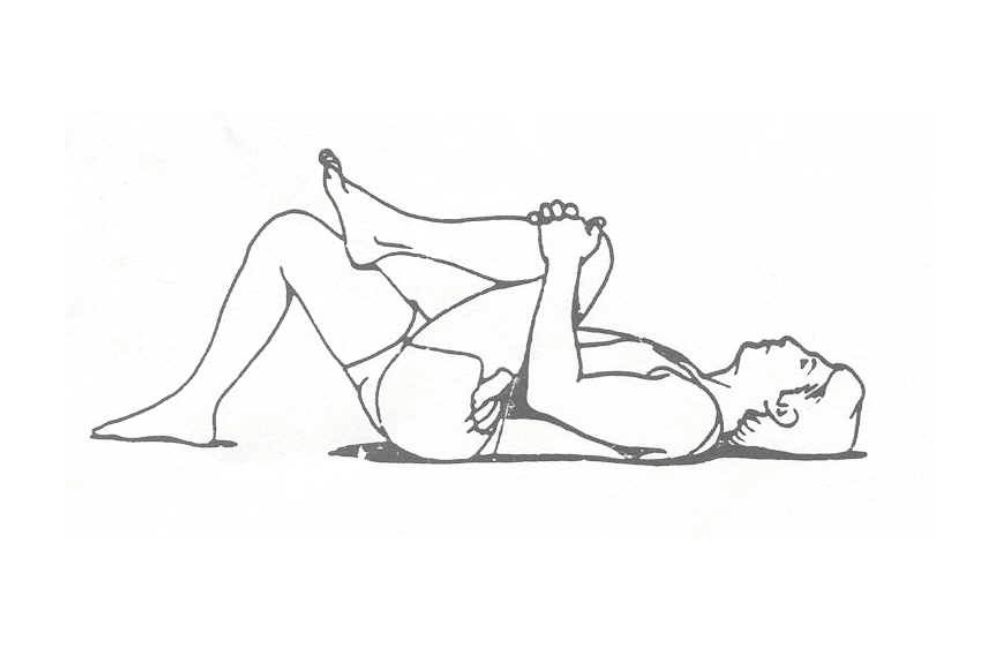
In the previous section, we reviewed some of the major hip muscles and their functions. Now, let’s take a moment to review some of the best hip exercises to keep this joint loose, strong, and pain-free!
1. Lunge Twists
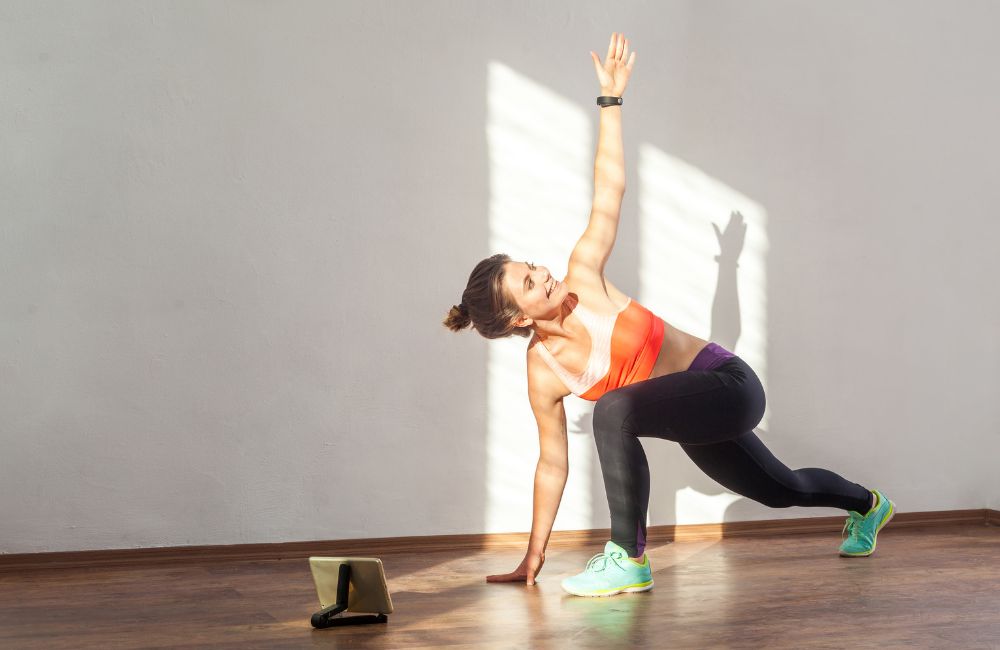
Lunges are terrific for building both strength and mobility. This exercise puts a great stretch through many muscles of the hips and low back. You’ll always feel great after hitting this move!
How to Perform
- Place your left foot a few feet in front of your right foot.
- Lunge down, so that your right knee comes closer to the floor.
- Then, place your right hand on the ground and twist toward your left side.
- Hold this stretch for 30 seconds and repeat 4 times on each side, 3-5 times per week.
2. Lunge with Back Extension
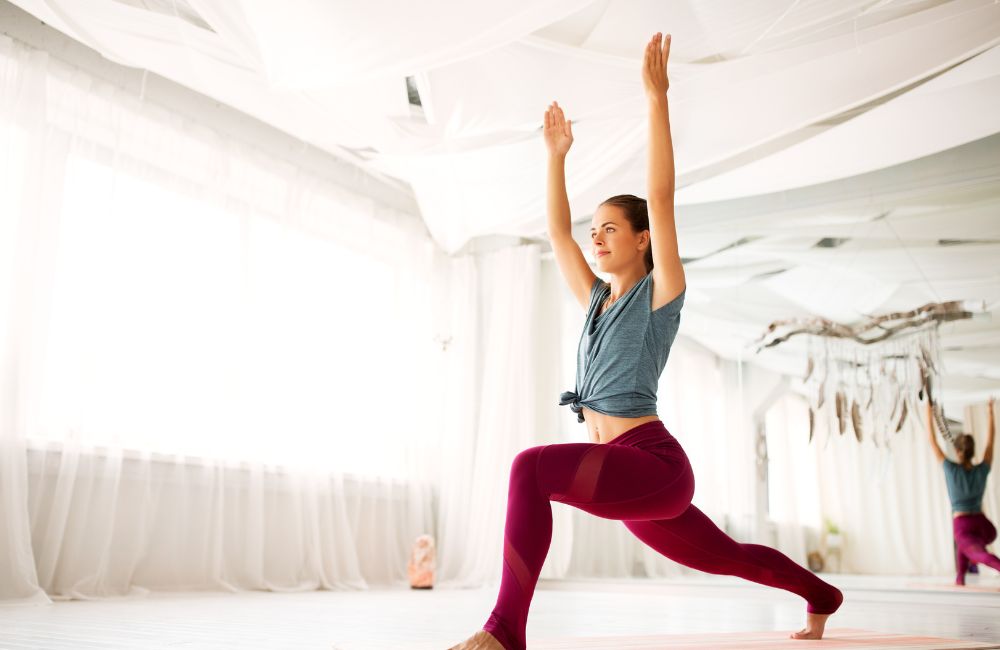
As you will see, lunges are the perfect choice for your hip mobility routine. This move differs slightly from the previous exercise, emphasizing different muscles of the hips and low back.
How to Perform
- Place the left foot a few feet in front of your right foot.
- Lunge down as low as you can, aiming to get your right knee close to the floor.
- Next, reach your arms up toward the ceiling and extend your trunk backward slightly.
- Hold this position for 30 seconds and repeat 4 times on each side, 3-5 times per week.
3. Single Knee to Chest Stretch (SKTC)
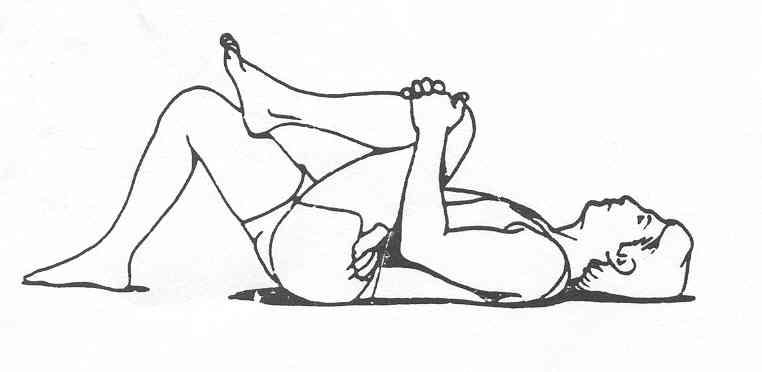
If you’ve ever had to have physical therapy for back or hip pain, you’ve probably performed this stretch.
This move tends to be very easy for nearly everyone and generally causes very little discomfort. Best of all, the SKTC can often lead to significant improvement in symptoms after only a few focused stretching sessions.
How to Perform
- Lie flat on your back.
- Next, pull your right knee up toward your chest, placing both of your hands on your shin.
- Hold this stretch for 30 seconds, repeat 4 times on both sides, and perform this whole series 3-5 times per week.
4. 90-90 Runner’s Stretch
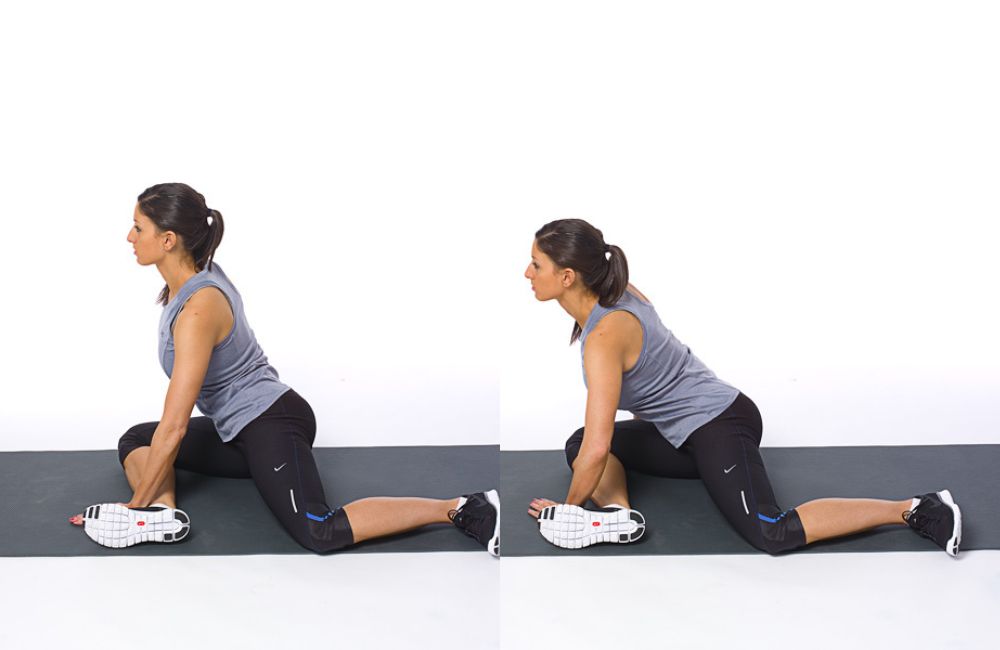
If you’re a jogger, sprinter, or even a walker, you’ve probably performed this stretch before. If you haven’t, you should! This stretch improves mobility throughout the entire hip joint and is great for active individuals.
How to Perform
- Sit on the floor, with your right leg in front of you, with your knee at a 90-degree angle. You may need to use your hands to position your legs correctly.
- At the same time, move your left leg out to the side, with your left knee also bent at a 90-degree angle.
- At this point, you should have the outside of your right thigh and lower leg on the ground, with your insole facing the ceiling. Also, you should have the inner part of your left knee and the inner portion of your left lower leg on the floor.
- If you need to, be sure to pad up your hips, knees, and ankles with pillows. This will take most of the stress off of these areas and will be much more comfortable for you.
- Hold this position for 1-2 minutes on each side and perform this stretch 3-5 times per week.
5. Advanced Single Knee to Chest Stretch
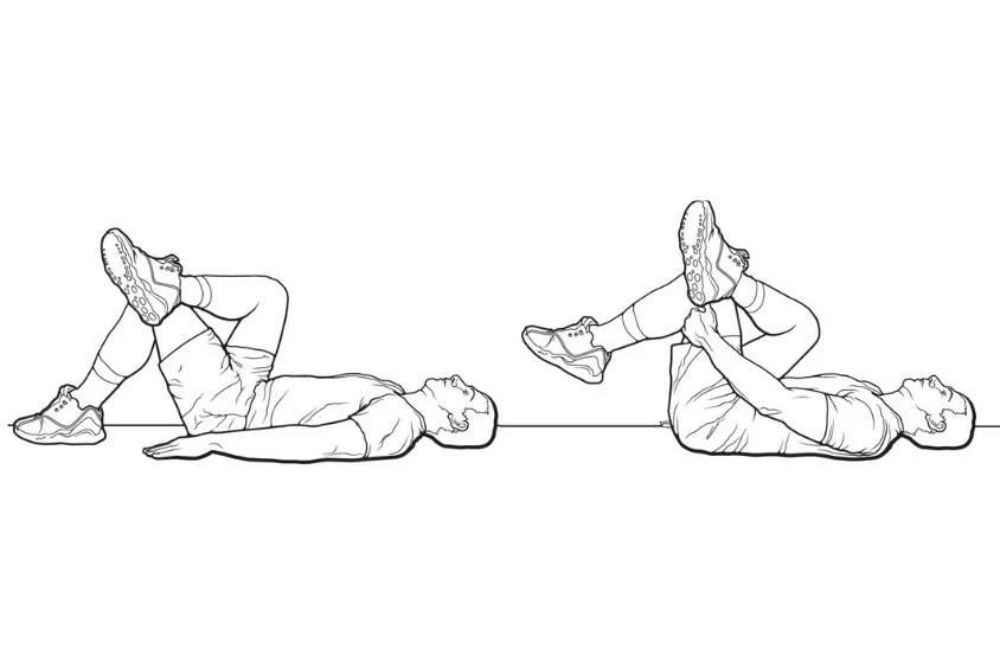
This move provides one of the best ways to stretch out your piriformis and glute muscles. Office workers love this stretch, as it provides extreme relief of hip and low back tightness.
How to Perform
- Place the outside of your right ankle on your left knee/thigh.
- Next, reach your hands downward and grasp your left thigh.
- Pull your left knee toward your chest, bringing your right ankle with you.
- Hold this stretch for 30 seconds and repeat 4 times on each side, 3-5 times per week.
6. Supine Butterfly Stretch
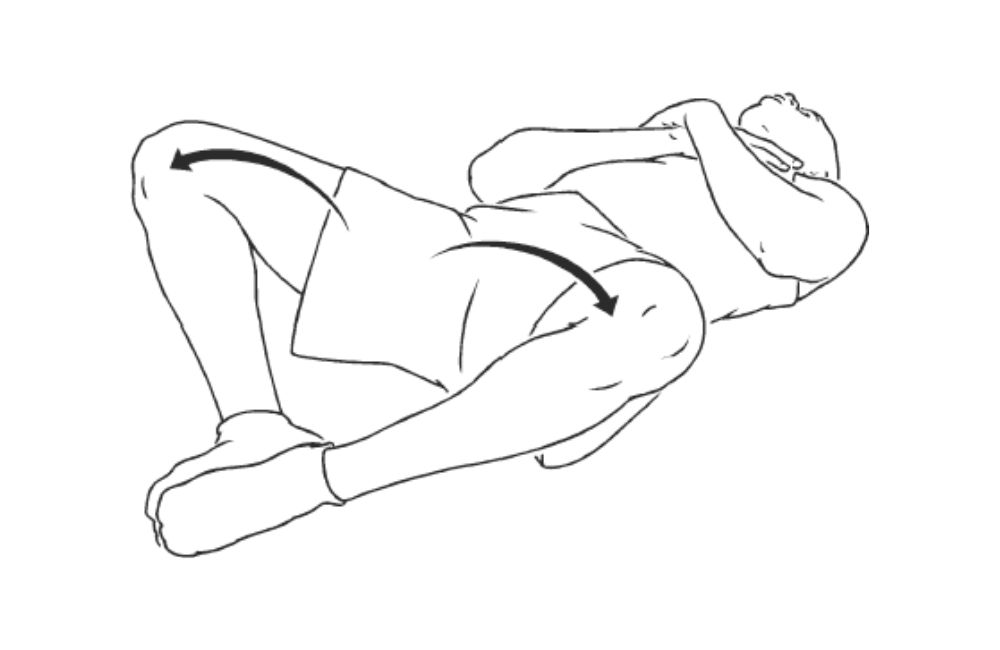
If you’re like many people, you’re probably familiar with the seated butterfly stretch. This modification on the classic butterfly stretch takes some of the stress off of the back and opens up the hips even more!
How to Perform:
- Lie flat on your back.
- Place the soles of your feet in contact with one another.
- Next, allow your knees to fall down toward the floor, separating from one another.
- Hold this stretch for 30 seconds and repeat 4 times, 3-5 times each week.
7. Seated Hip and Back Rotation Stretch
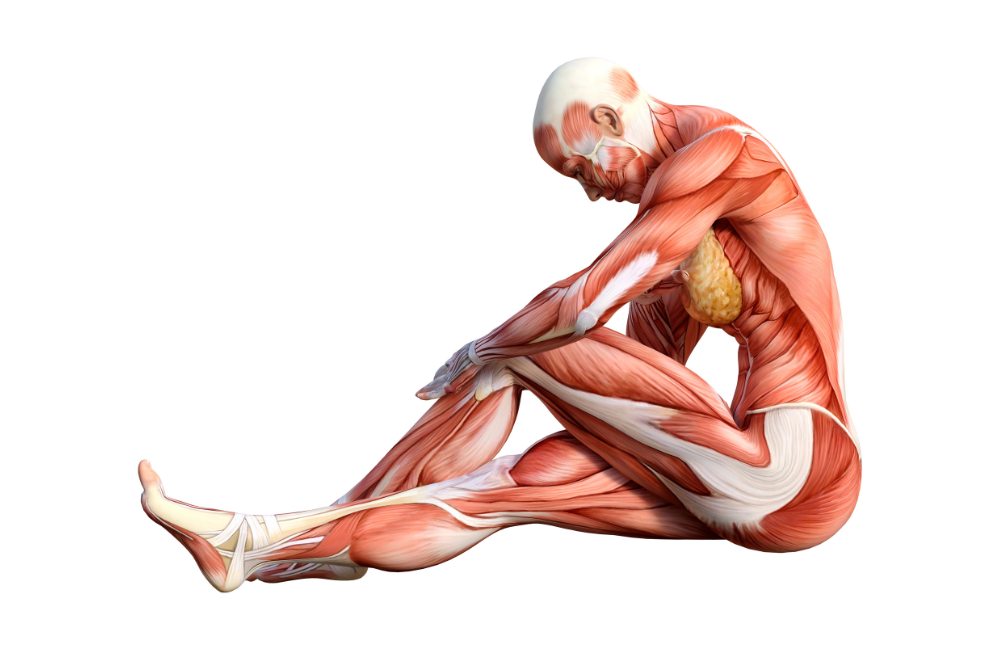
Rotational stretches are critical for improving low back and hip mobility. This and all of the other rotational stretches on this list translate well to daily life and help to loosen up these tight areas.
How to Perform:
- Start in a seated position on the floor.
- Next, cross your left leg over your right, placing your left foot flat on the ground on the outside of your right thigh.
- Then, rotate toward your left, and place your right elbow on the outside of your left thigh, pushing further into the stretch.
- Hold for 30 seconds and repeat 4 times on each side, 3-5 times per week.
8. Advanced Child’s Pose
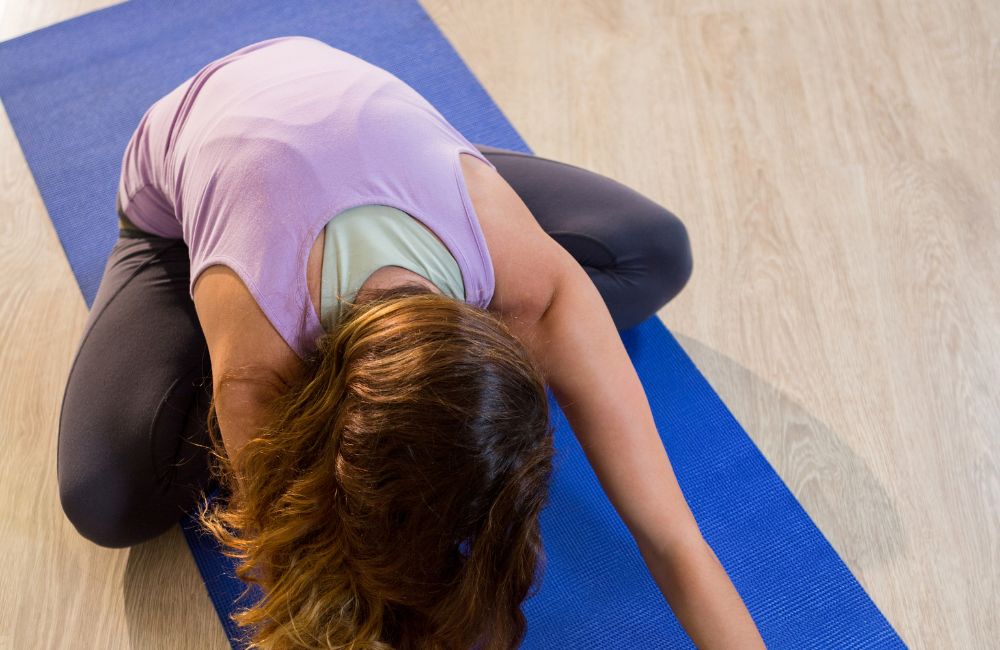
By itself, the child’s pose is a great hip and low back stretch. However, this advanced version will really shake the hips loose!
How to Perform:
- Start in a seated position.
- Next, cross your right leg over the top of your left, so that you are in a “pretzel” position.
- Then, flex your trunk down toward the floor and crawl your hands as far forward on the ground as you can.
- Hold this position for 2 minutes, then switch your leg position. Complete 3-5 times per week.
9. Advanced Down Dog
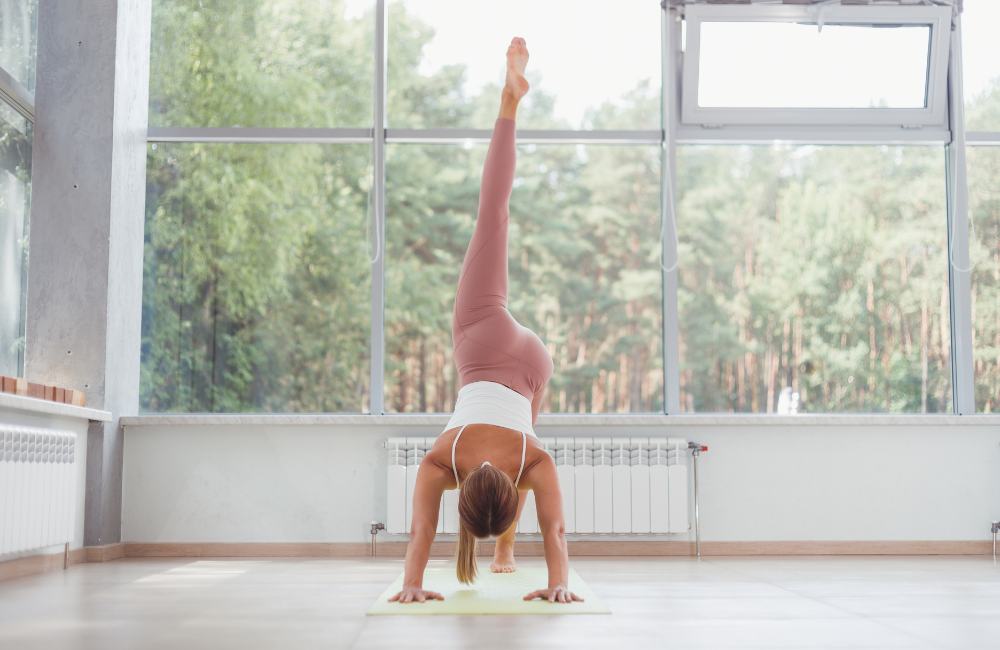
Downward dog stretches out the hamstrings, glutes, back, and many other areas. By adding in one small modification, you can significantly increase the stretch and stability work for the hip region.
How to Perform:
- Begin in a downward dog, with your body in a “V” shape created by your hands and feet being planted on the floor and your hips shooting straight up in the air.
- Next, kick your left leg up towards the ceiling, keeping your knee straight.
- Hold this position for 30 seconds and repeat it 4 times on each side. Complete this series 3-5 times per week.
10. Kneeling Trunk Lateral Flexion Stretch
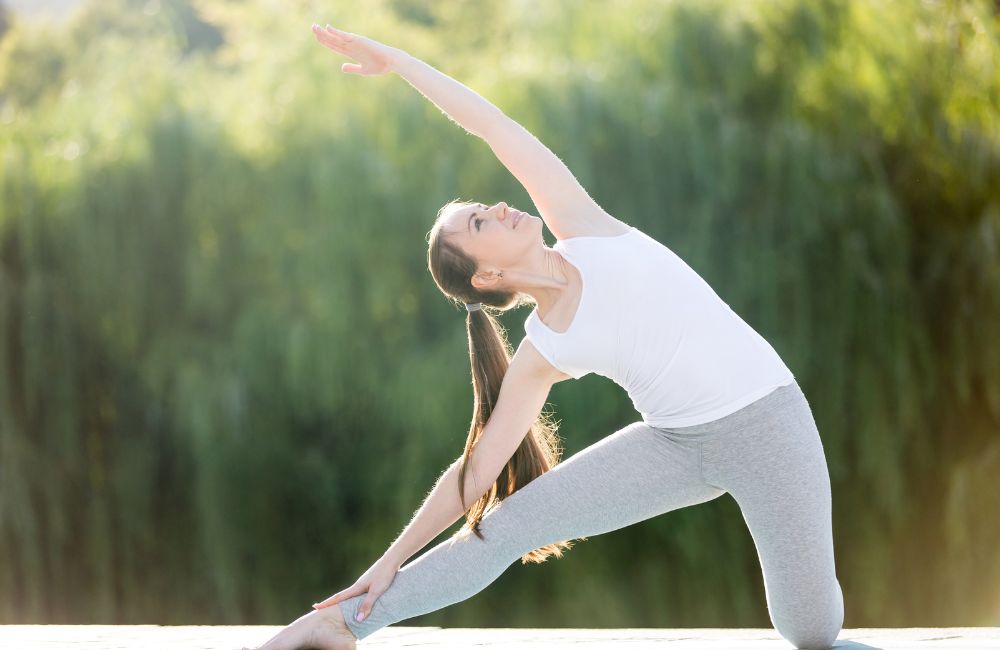
This stretch can be a bit uncomfortable for some people, as it places a lot of stress through the low back. However, this is a key stretch to keep the medial and lateral musculature of the hips and low back strong and loose.
How to Perform:
- Start in a kneeling position, with both knees on the ground..
- Next, kick your left leg straight out to the side, keeping your right knee on the ground.
- Then, bend toward the left side with your right hand straight up over your head.
- You should feel a stretch on the inner thigh and on the right side of your trunk.
- Hold this position for 30 seconds and repeat it 4 times on each side. Complete this stretch 3-5 times a week.
11. Lunge Position Hip Flexor Stretch
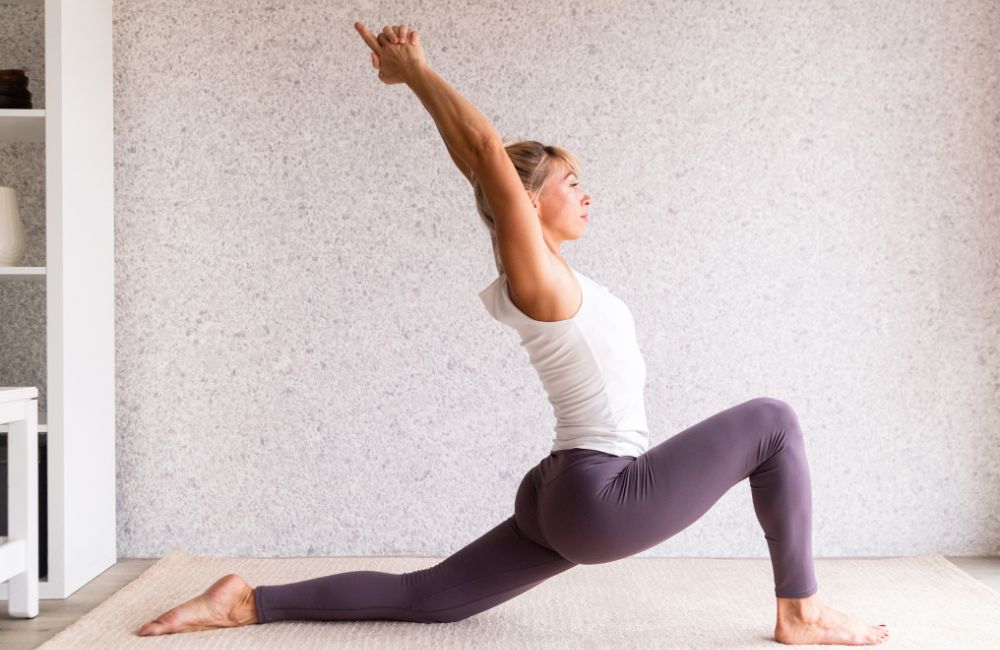
Previously, we described a few lunge movements designed to increase isometric strength and mobility in the hips. This move is focused, almost exclusively, on increasing flexibility in the hip flexor region.
How to Perform
- Place your right knee on the ground, with your left foot about 2-3 feet in front of the said knee.
- Next, lean forward, keeping your back straight.
- You should feel a deep stretch in your right hip flexors.
- Hold for 30 seconds and repeat 4 times on each side, 3-5 times per week.
12. Oblique Lunge Stretch
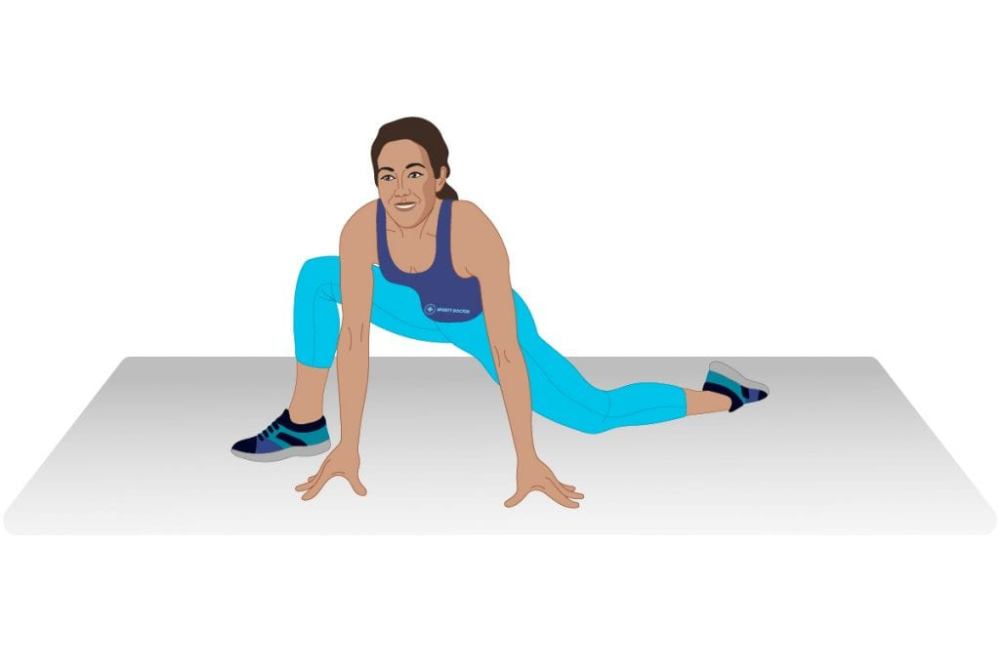
Modifying the angle of a lunge can have profound effects. In this case, by slightly changing your lunge angle, you’ll open up both your hip flexors and your hip adductors at the same time.
How to Perform:
- Start in a kneeling position, with both knees on the ground.
- Next, place your right foot on the ground in a lunge position, with a 45-degree outward rotation of your right leg.
- Slide your right leg as far forward as you can to increase the stretch.
- Hold for 30 seconds and repeat 4 times per side, 3-5 times per week.
13. Happy Baby Stretch
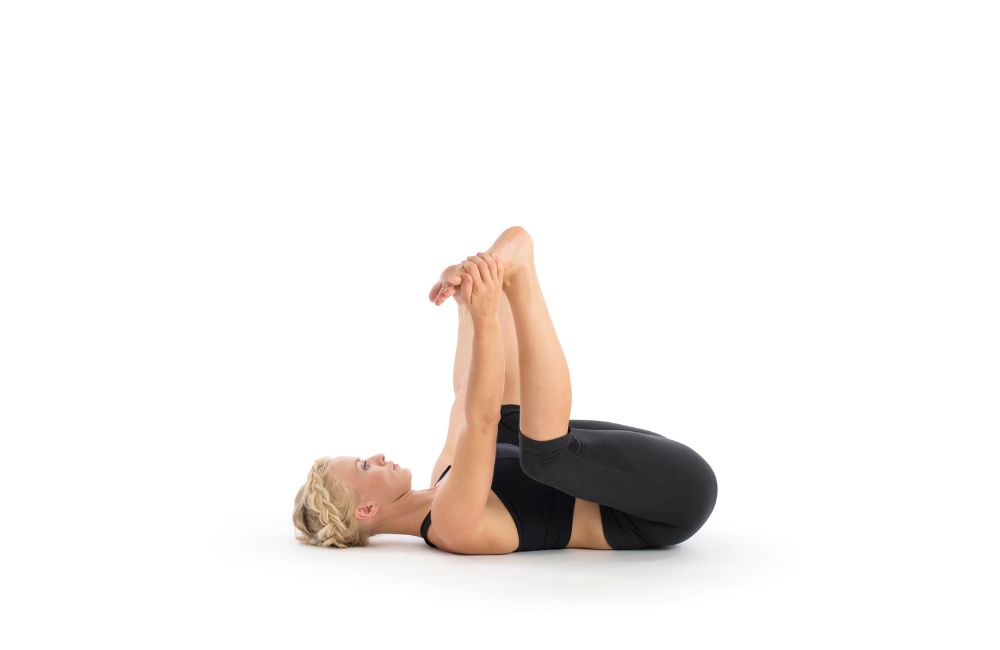
Babies start off with very flexible bodies. Then, over time, we become stiffer and stiffer as time goes by.
Assuming a “happy baby” position can go a long way toward returning us to our baby-like flexibility!
How to Perform
- Lie flat on your back.
- Next, kick your legs up toward the ceiling, with your knees slightly bent.
- Grasp your right foot with your right hand and your left foot with your left hand.
- Then, simply rock side-to-side in this position.
- Hold this position for 5-10 minutes per session, for 3-5 sessions per week.
14. Sidelying Crossover Stretch
This is a big stretch for the hips, low back, and even the knees. So, if you can’t get the hang of it right away, keep working! You’ll be there soon enough.
How to Perform
- Start by lying on your left side.
- Next, cross your right leg over your left and attempt to bring your right shoulder blade down to the floor.
- At the same time, attempt to grab your left ankle/foot, with your right hand.
- Pull upward with your right hand in order to stretch out the left quads and hip flexors.
- Hold this position for 30 seconds and repeat 4 times on each side, 3-5 times per week.
15. Supine Pigeon Pose with Rotation
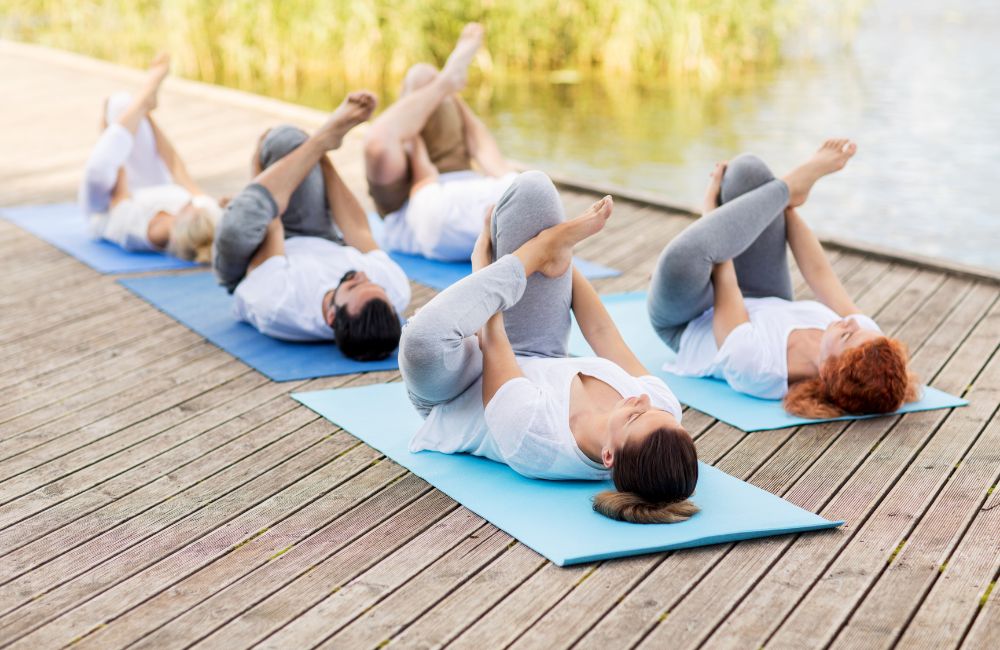
Yoga poses are always good choices for loosening up the hips. This one, in particular, will really put some serious stretch through your hip joint and the surrounding muscles.
How to Perform:
- Start by lying flat on your back.
- Next, place your right foot on the outside of your left thigh, just above the knee.
- Then, bend your left knee up towards your buttocks.
- Hold this position for 30 seconds and repeat 4 times per side, 3-5 times per week.
16. Bridges
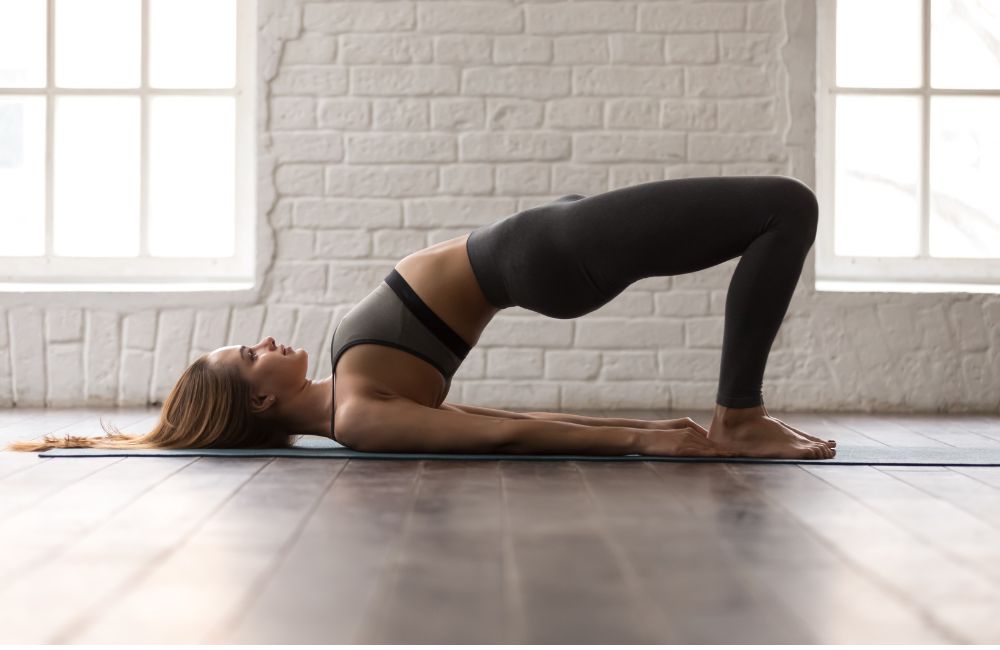
Bridges are one of the best exercises in existence. They strengthen the glutes, hamstrings, and various core muscles, while also stretching out different leg muscles. Best of all, it’s performed while lying down!
How to Perform
- Start by lying on your back with your knees bent and your feet flat on the floor.
- Next, press your feet into the floor and lift your hips up toward the ceiling.
- Hold this position for 10 seconds and repeat 10 times, for 3 sets, 3-5 times per week.
17. Child’s Pose
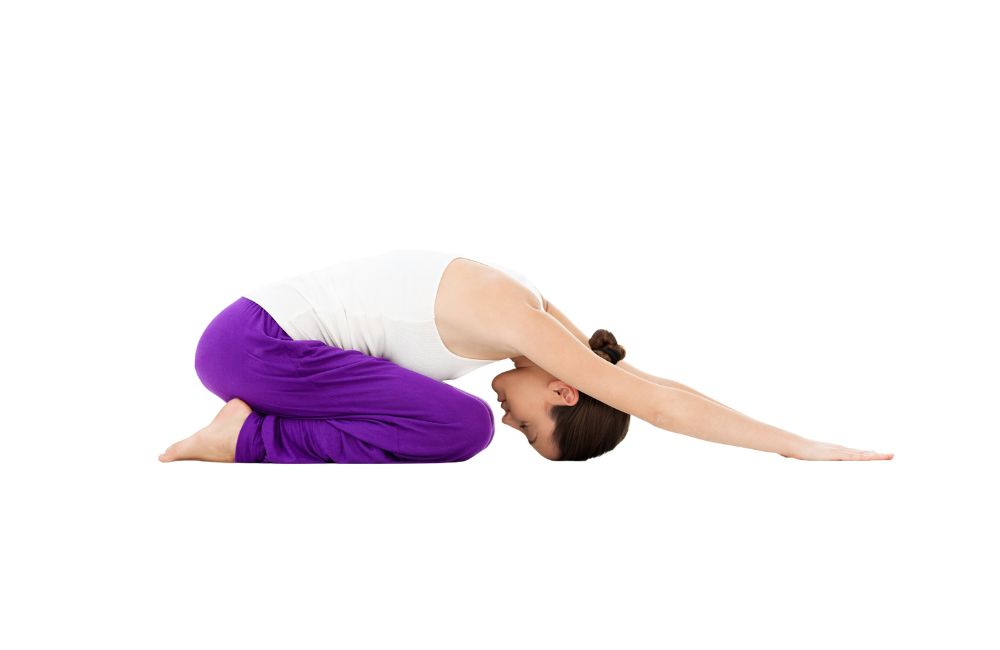
A standard stretch, but a great one. The child’s pose is perfect for loosening up the back and hips. Better yet, it’s a great position for focusing on your breathing and meditating.
How to Perform
- Start with your hands and knees on the floor.
- Next, push your hips backward, attempting to sit on your ankles.
- At the same time, crawl your hands forward, increasing the stretch.
- Hold this position for 2 minutes or longer, repeating 3-5 times per week.
18. Upward Dog
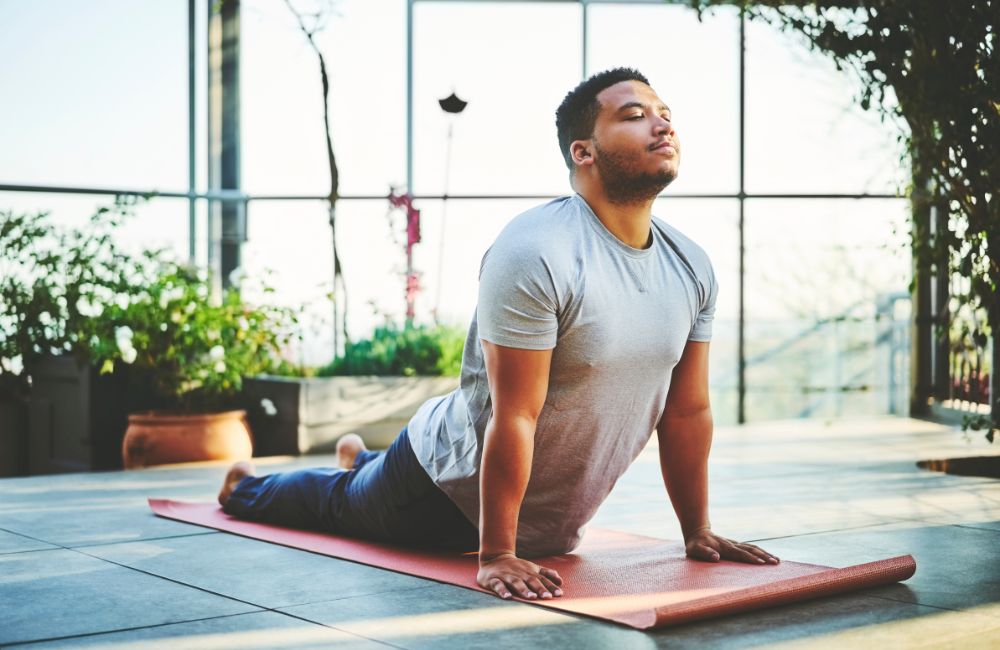
Earlier, we outlined the downward dog stretch, with a slight modification. Now, we’ll take a look at its counterpart: the downward dog stretch.
How to Perform:
- Start by lying on your stomach.
- Next, place your hands on the ground and push yourself upward, extending your spine backward.
- Hold this position for 30 seconds and repeat 4 times, completing 3-5 sessions per week.
19. Dancer’s Pose
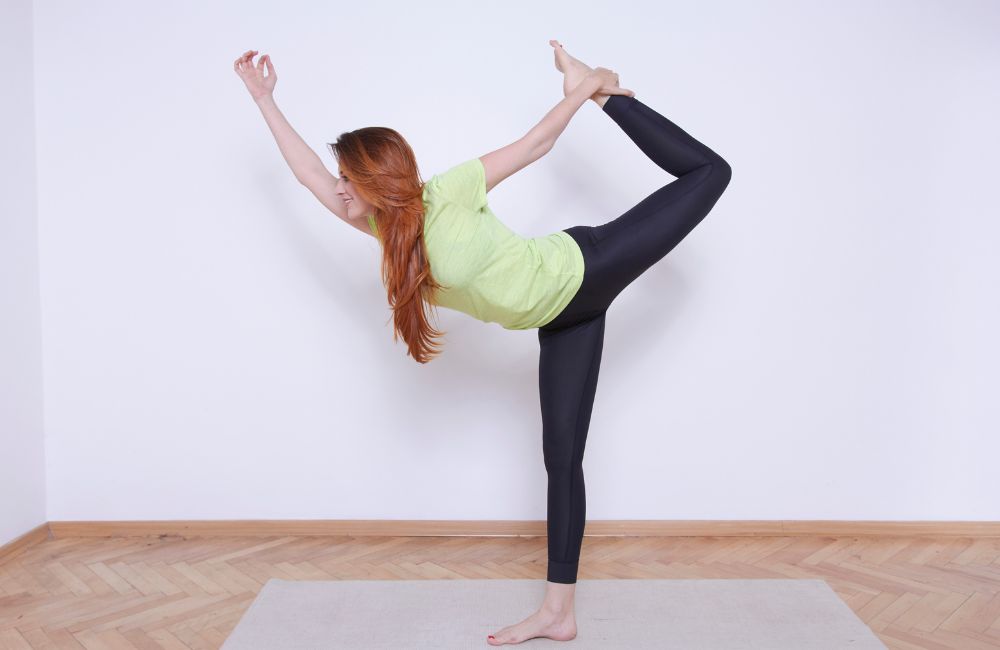
This pose requires balance, strength, and flexibility. By practicing it regularly, you’ll improve in all three of these areas!
How to Perform:
- Start by standing on your left leg.
- Next, bend your right knee, extending your right leg behind you.
- As you do so, grasp your right ankle with your right hand and reach your left hand forward for counterbalance.
- Hold this position for 30 seconds and repeat 4 times on each side, 3-5 times per week.
The Final Takeaway
The hip region is particularly prone to stiffness and weakness. Fortunately, by performing regular exercise, you can easily address this problem. Try this routine out today to see if it works for you!
Works Cited
- Ahuja, V., Thapa, D., Patial, S., Chander, A., & Ahuja, A. (2020). Chronic hip pain in adults: Current knowledge and future prospective. Journal of anaesthesiology, clinical pharmacology, 36(4), 450–457. https://doi.org/10.4103/joacp.JOACP_170_19
- Luthra, J. S., Al-Habsi, S., Al-Ghanami, S., Ghosh, S., & Al-Muzahemi, K. (2019). Understanding Painful Hip in Young Adults: A Review Article. Hip & pelvis, 31(3), 129–135. https://doi.org/10.5371/hp.2019.31.3.129


